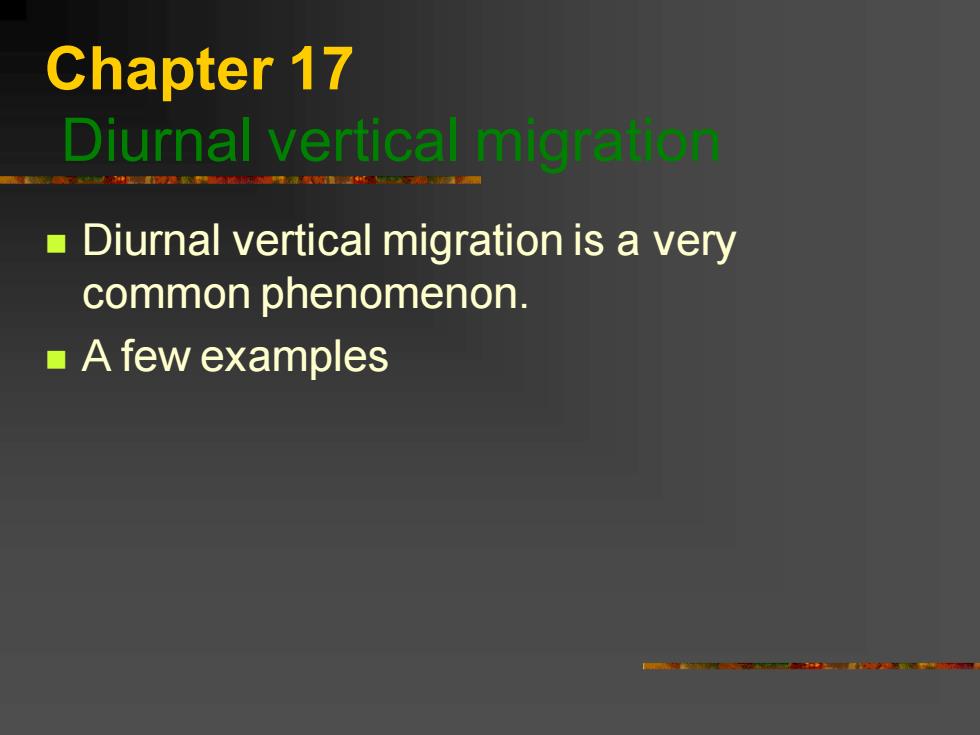
Chapter 17 Diurnal vertical migration ◼ Diurnal vertical migration is a very common phenomenon. ◼ A few examples
Chapter 17 Diurnal vertical migration ◼ Diurnal vertical migration is a very common phenomenon. ◼ A few examples
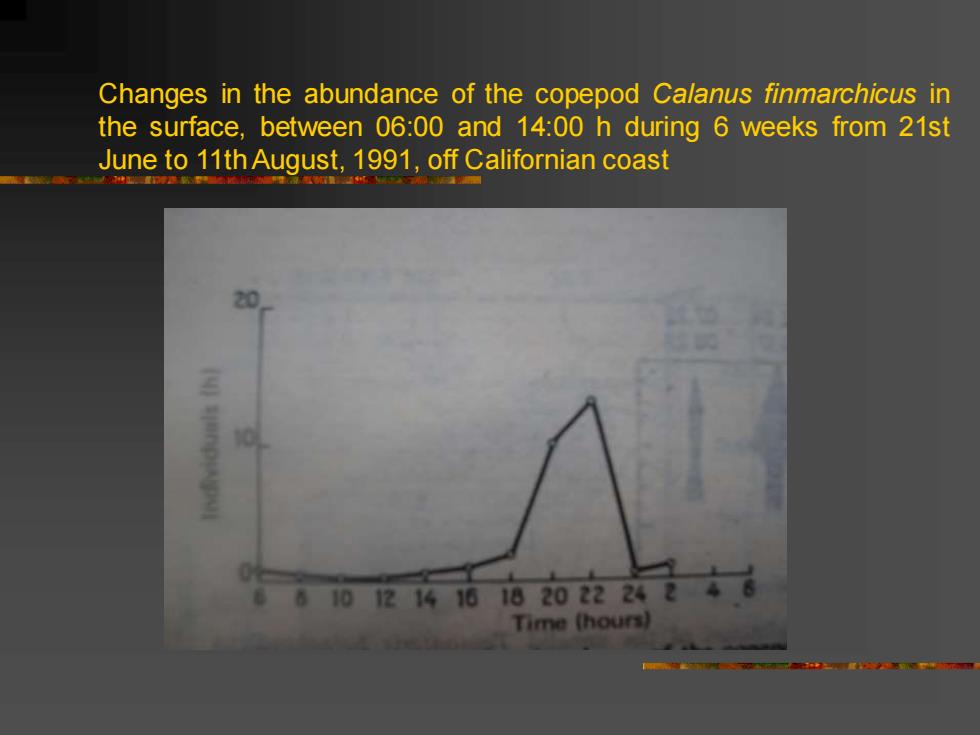
Changes in the abundance of the copepod Calanus finmarchicus in the surface, between 06:00 and 14:00 h during 6 weeks from 21st June to 11thAugust, 1991, off Californian coast
Changes in the abundance of the copepod Calanus finmarchicus in the surface, between 06:00 and 14:00 h during 6 weeks from 21st June to 11thAugust, 1991, off Californian coast
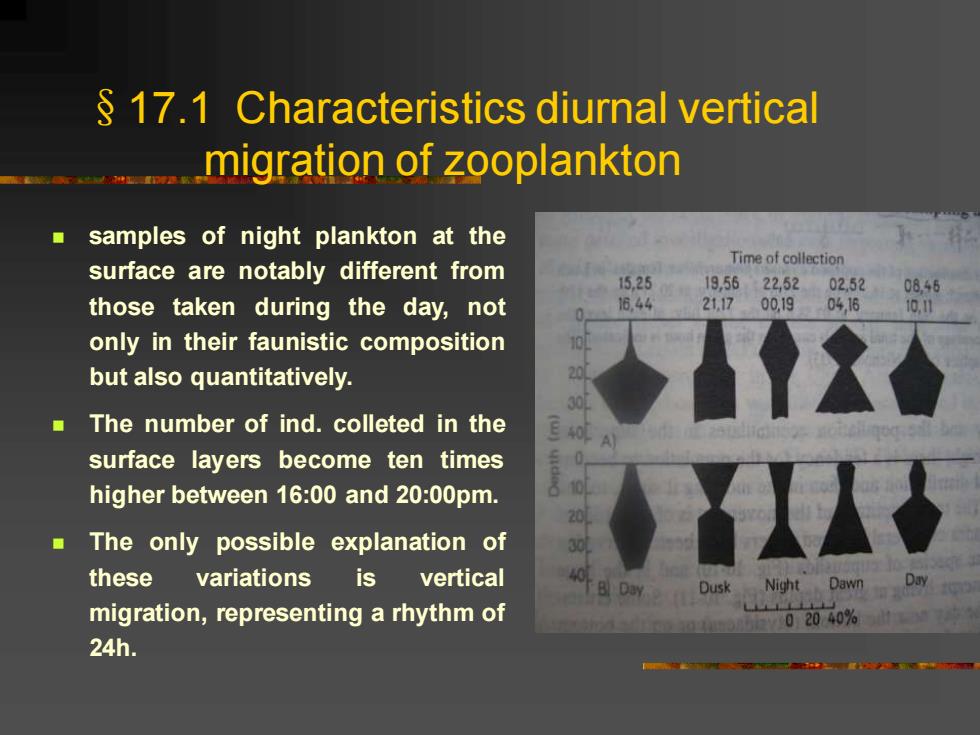
§17.1 Characteristics diurnal vertical migration of zooplankton ◼ samples of night plankton at the surface are notably different from those taken during the day, not only in their faunistic composition but also quantitatively. ◼ The number of ind. colleted in the surface layers become ten times higher between 16:00 and 20:00pm. ◼ The only possible explanation of these variations is vertical migration, representing a rhythm of 24h
§17.1 Characteristics diurnal vertical migration of zooplankton ◼ samples of night plankton at the surface are notably different from those taken during the day, not only in their faunistic composition but also quantitatively. ◼ The number of ind. colleted in the surface layers become ten times higher between 16:00 and 20:00pm. ◼ The only possible explanation of these variations is vertical migration, representing a rhythm of 24h
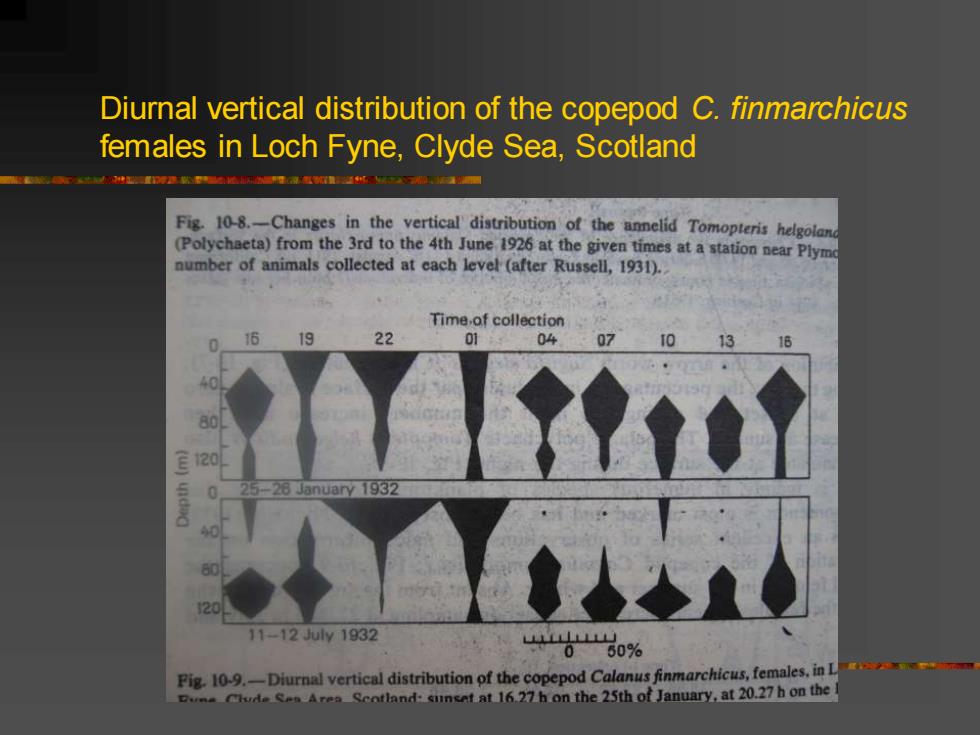
Diurnal vertical distribution of the copepod C. finmarchicus females in Loch Fyne, Clyde Sea, Scotland
Diurnal vertical distribution of the copepod C. finmarchicus females in Loch Fyne, Clyde Sea, Scotland
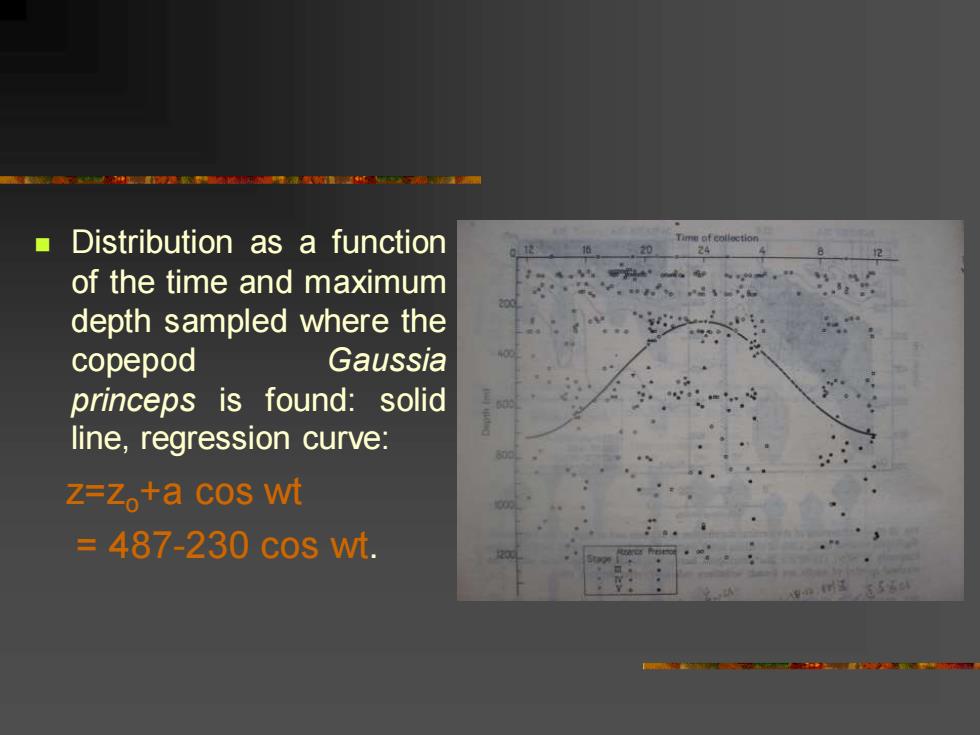
◼ Distribution as a function of the time and maximum depth sampled where the copepod Gaussia princeps is found: solid line, regression curve: z=zo+a cos wt = 487-230 cos wt
◼ Distribution as a function of the time and maximum depth sampled where the copepod Gaussia princeps is found: solid line, regression curve: z=zo+a cos wt = 487-230 cos wt
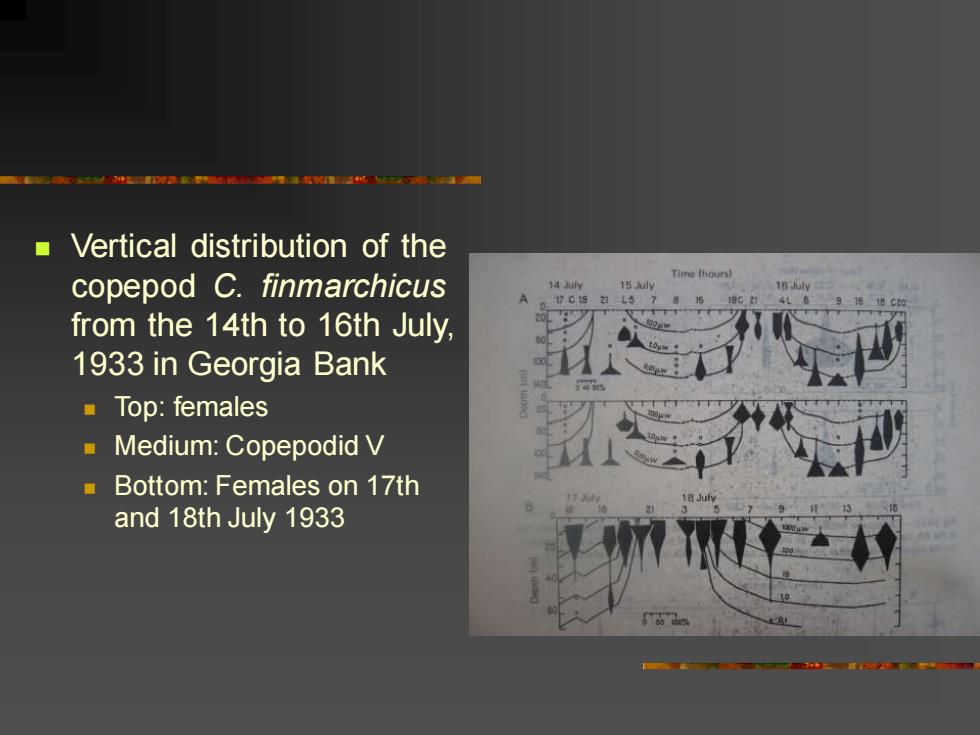
◼ Vertical distribution of the copepod C. finmarchicus from the 14th to 16th July, 1933 in Georgia Bank ◼ Top: females ◼ Medium: Copepodid V ◼ Bottom: Females on 17th and 18th July 1933
◼ Vertical distribution of the copepod C. finmarchicus from the 14th to 16th July, 1933 in Georgia Bank ◼ Top: females ◼ Medium: Copepodid V ◼ Bottom: Females on 17th and 18th July 1933
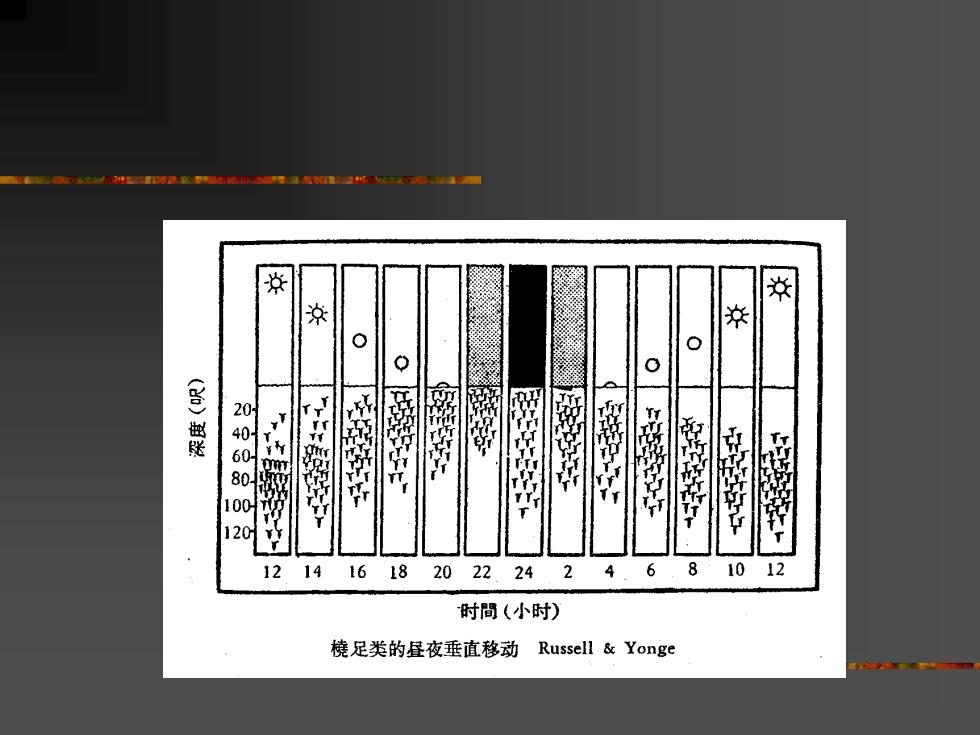
女 汝 本 * (S)樹账 00000020 12 1 6 18 20 22 24 2 6 8 10 12 时間(小时) 橈足类的昼夜垂直移动 Russell Yonge

Daylight 20 40 (w)ude 60 0 100 120 4 PM 10PM 4AM 10 AM 4 PM FIGURE 14.22 The depth distribution at different times of day of a vertically migrating copepod
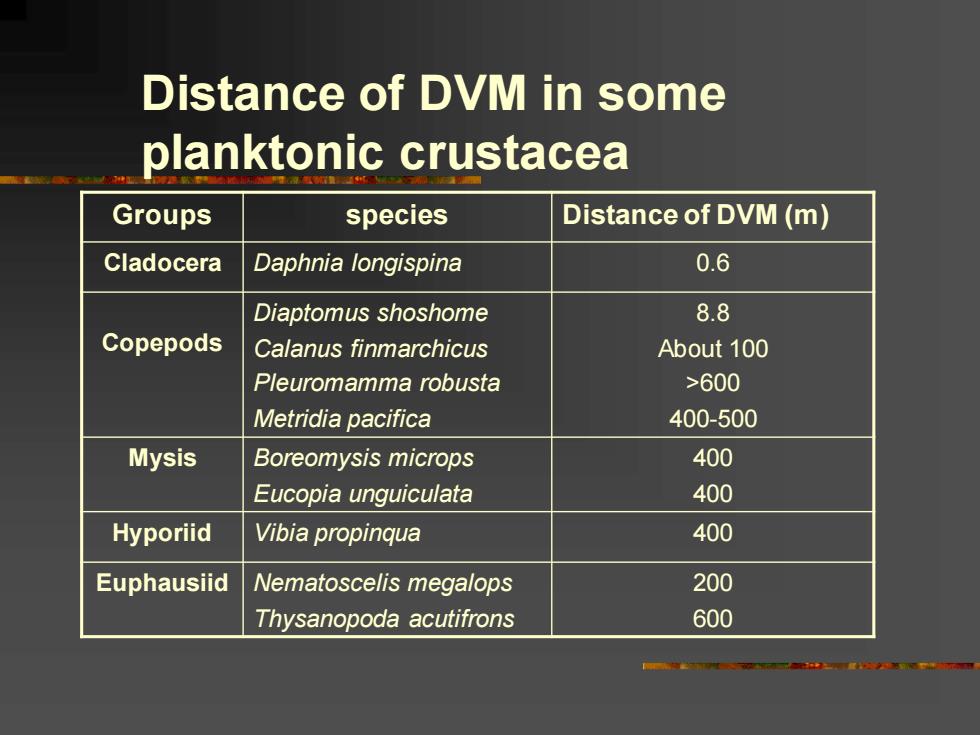
Distance of DVM in some planktonic crustacea Groups species Distance of DVM (m) Cladocera Daphnia longispina 0.6 Copepods Diaptomus shoshome Calanus finmarchicus Pleuromamma robusta Metridia pacifica 8.8 About 100 >600 400-500 Mysis Boreomysis microps Eucopia unguiculata 400 400 Hyporiid Vibia propinqua 400 Euphausiid Nematoscelis megalops Thysanopoda acutifrons 200 600
Distance of DVM in some planktonic crustacea Groups species Distance of DVM (m) Cladocera Daphnia longispina 0.6 Copepods Diaptomus shoshome Calanus finmarchicus Pleuromamma robusta Metridia pacifica 8.8 About 100 >600 400-500 Mysis Boreomysis microps Eucopia unguiculata 400 400 Hyporiid Vibia propinqua 400 Euphausiid Nematoscelis megalops Thysanopoda acutifrons 200 600
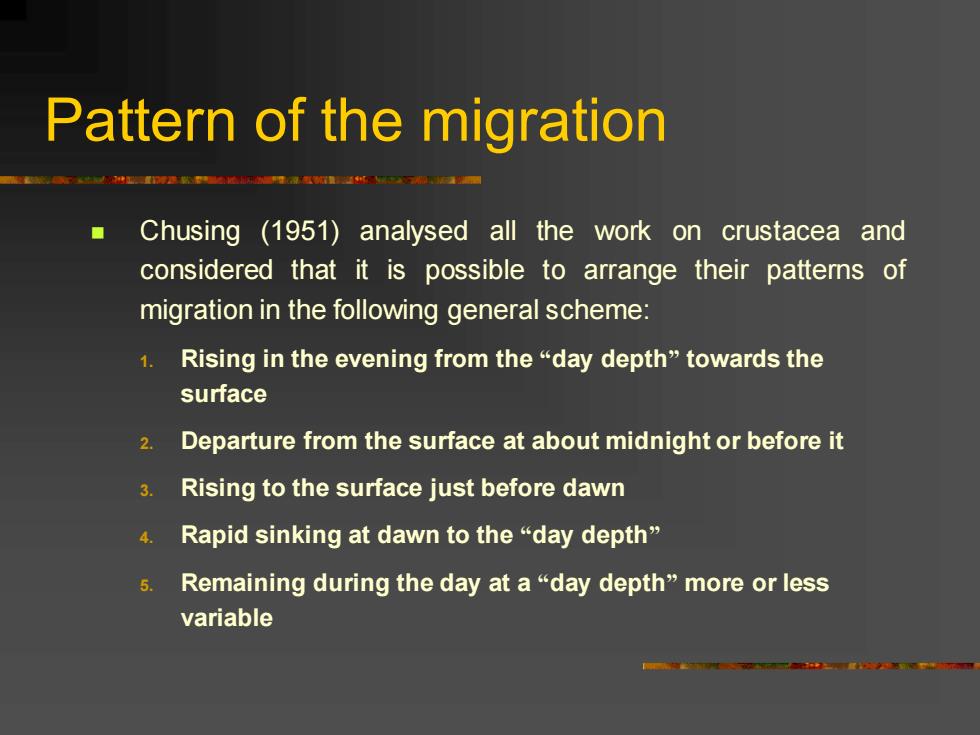
Pattern of the migration ◼ Chusing (1951) analysed all the work on crustacea and considered that it is possible to arrange their patterns of migration in the following general scheme: 1. Rising in the evening from the “day depth” towards the surface 2. Departure from the surface at about midnight or before it 3. Rising to the surface just before dawn 4. Rapid sinking at dawn to the “day depth” 5. Remaining during the day at a “day depth” more or less variable
Pattern of the migration ◼ Chusing (1951) analysed all the work on crustacea and considered that it is possible to arrange their patterns of migration in the following general scheme: 1. Rising in the evening from the “day depth” towards the surface 2. Departure from the surface at about midnight or before it 3. Rising to the surface just before dawn 4. Rapid sinking at dawn to the “day depth” 5. Remaining during the day at a “day depth” more or less variable